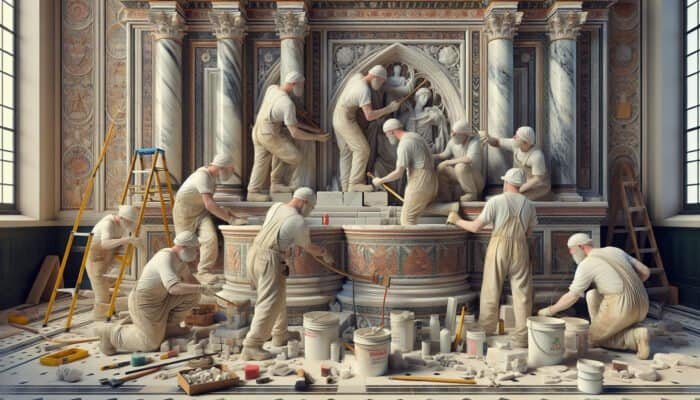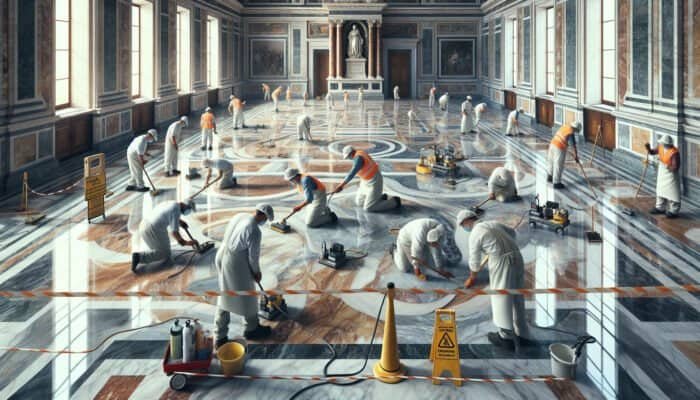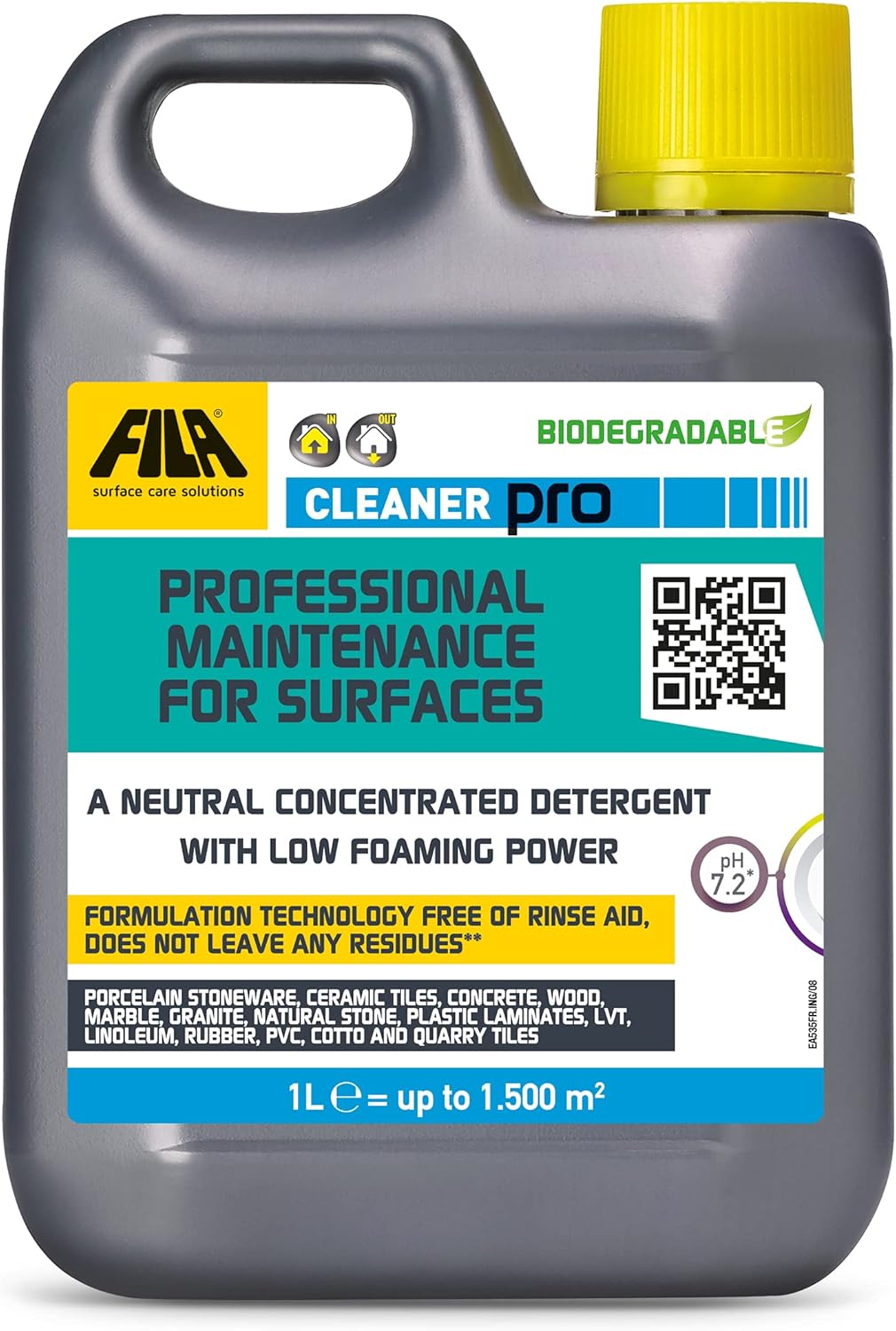Comprehensive Overview of Marble Restoration Practices Across the UK
Restoration of Damaged Marble Floors in Morden Park: Marble, widely regarded as a hallmark of elegance and sophistication, has been an integral part of the UK's architectural tapestry. Its usage spans numerous historical landmarks, from opulent stately homes to grand public buildings, representing not only visual appeal but also significant cultural heritage. The restoration of marble in Modern Park epitomises the dedication to preserving this rich history while enhancing usability and accessibility for contemporary society. As we examine the vital role of marble restoration in the UK, we will delve deeper into its historical significance, the prevalent causes of damage, and the effective techniques employed in the restoration process.
Exploring the Historical Importance of Marble in the UK

The utilisation of marble in the UK has a rich history that stretches back centuries, prominently showcased in iconic structures such as the British Museum and Westminster Abbey. These remarkable sites not only highlight the artistic prowess of their respective eras but also act as crucial links to our national identity and cultural heritage. The exquisite craftsmanship and intricate designs found in marble installations convey profound messages about historical contexts and the emphasis placed on both durability and aesthetic appeal. Thus, marble restoration transcends mere maintenance; it represents a vital act of preserving our shared cultural heritage. Each restoration initiative strengthens the narrative of our heritage, ensuring that future generations can appreciate the artistry and historical significance embedded within these remarkable surfaces.
Identifying the Common Causes of Marble Damage
Marble flooring throughout the UK encounters a myriad of challenges that contribute to its deterioration. Environmental factors such as weathering can lead to surface erosion, particularly in regions exposed to harsh elements. The combination of rain and acidic pollutants accelerates this erosion process, resulting in visible discolouration and compromised structural integrity. Furthermore, heavy foot traffic in busy areas can cause scratches and scuffs, ultimately undermining the marble’s lustrous finish. Recognising these prevalent causes is essential for effective restoration. By understanding that the restoration of marble must address both aesthetic and structural concerns, restoration experts can devise comprehensive strategies tailored to the specific types of damage encountered.
Effective Techniques for Marble Restoration
The methods utilised for marble restoration in the UK are varied and highly specialised. The initial phase often involves thorough cleaning, employing techniques such as steam cleaning or bespoke chemical treatments designed to eliminate stains without harming the marble. Following the cleaning, professionals may implement honing processes to refine the surface and eliminate superficial scratches. In cases of deeper imperfections, polishing techniques are employed to restore the original sheen, revitalising the marble’s appearance. For more severe damages, such as cracks or chips, epoxy fillers may be utilised to mend and restore the structural integrity of the marble. These meticulously executed methods ensure that the restoration of damaged floors meets both aesthetic and functional standards, preserving the beauty and historical significance of marble surfaces.
Understanding Regulatory Frameworks for Marble Restoration

In the UK, the restoration of marble is subject to various regulations aimed at preserving the historical integrity of architectural structures and materials. The Conservation Principles established by Historic England serve as a guiding framework for restoration efforts, emphasising the necessity of preserving authenticity and historical context. Additionally, local planning regulations often dictate the acceptable types of materials and techniques to be used during restoration projects. A comprehensive understanding of these legal requirements is crucial for restoration firms, ensuring compliance while preserving the cultural significance of projects such as the restoration of marble. This diligence not only protects the materials involved but also honours the legacy of the sites being restored.
Case Studies Highlighting Successful Marble Restoration Efforts
Analysing successful marble restoration projects across the UK offers invaluable insights into effective practices. A notable example is the restoration of the marble floors at the Victoria and Albert Museum, which involved extensive cleaning and meticulous restoration of intricate designs, resulting in a renewed vibrancy that captivates visitors. Another exemplary project is the restoration of the marble entrance at the National Gallery, where experts seamlessly blended traditional techniques with cutting-edge technology to achieve remarkable outcomes. These case studies underscore the diverse methodologies employed and the positive results achieved, reinforcing the significance of professional expertise in restoring marble.
Expert Tip: Recommended Products for Everyday Marble Maintenance
In-Depth Case Studies of Marble Floor Restoration Projects
Marble Restoration at Buckingham Palace: A Case Study

A prime example of exemplary marble restoration is the ongoing efforts at Buckingham Palace, where the marble floors demand constant upkeep due to their historical significance and the volume of foot traffic they experience. The restoration strategies implemented at Buckingham Palace involve meticulous cleaning to eradicate years of grime and stains, followed by honing to rejuvenate the marble’s surface. Furthermore, specialists face challenges such as maintaining the palace’s historical accuracy whilst incorporating modern cleaning technologies. By committing to these restoration efforts, Buckingham Palace preserves its regal image and enhances the safety and comfort of its visitors, thereby serving as a shining example of successful marble restoration practices.
Westminster Abbey: A Testament to Historical Preservation
The restoration of marble floors within Westminster Abbey exemplifies a steadfast commitment to historical accuracy. Given the Abbey’s immense historical significance, careful deliberation is crucial when selecting the restoration technique. This ambitious project involved thorough research into the original materials and methods used, ensuring that the restoration adheres to the Abbey’s rich history. This case illustrates the delicate equilibrium between preserving authenticity and executing restoration work. The success of this project reinforces the importance of restoring marble floors within the broader context of cultural heritage preservation, reminding us of the significance of safeguarding our historical landmarks.
The British Museum: Navigating Challenges in Marble Restoration
At the British Museum, the restoration of marble floors presents distinct challenges and opportunities. The museum’s commitment to public accessibility necessitates that restoration efforts be conducted in a manner that minimally disrupts visitor experiences. Innovative methods, such as employing non-invasive cleaning techniques and temporary flooring solutions, have been effectively implemented to achieve this goal. This approach enables the museum to remain open while essential restoration of its marble floors is underway. The British Museum’s initiatives exemplify how the restoration of marble can coexist with modern public engagement, successfully harmonising preservation with accessibility within one of the UK’s most cherished cultural institutions.
Guidelines for Selecting an Ideal Marble Restoration Company
Importance of Accreditation and Industry Experience
Choosing the right restoration company is vital for the success of any marble restoration project. Accreditation serves as a crucial factor, as it guarantees that the company complies with industry standards and best practices. In the UK, organisations such as the Stone Federation Great Britain offer accreditation that signifies a company's commitment to quality and professionalism. Experience is equally important; companies with a proven history in marble restoration possess a deep understanding of the nuances associated with different marble types and the unique challenges encountered in various environments. By prioritising accredited and experienced professionals, clients can ensure that the restoration of their marble surfaces is executed to the highest standards.
Evaluating Restoration Techniques and Equipment
When assessing potential restoration companies, it is essential to scrutinise the techniques and equipment they utilise. Contemporary restoration demands specialised tools and innovative methods to achieve optimal results. Companies that invest in advanced equipment, such as diamond polishing pads and state-of-the-art cleaning systems, are likely to deliver superior outcomes compared to those that rely on outdated practices. This modernisation not only enhances the quality of restoration but also reduces the risk of damaging the marble. Gaining an understanding of the equipment and techniques employed by prospective companies will ensure that the chosen specialists are well-prepared to manage the complexities of restoring marble floors at Modern Park, particularly in areas that require focused attention and expertise.
Leveraging Customer Reviews and Detailed Case Studies
Customer reviews and comprehensive case studies are invaluable when evaluating the reputation of marble restoration companies. Positive feedback from previous clients provides critical insights into the quality of work and level of customer service. Furthermore, detailed case studies that outline specific projects, including the challenges encountered and solutions implemented, effectively showcase the company’s capabilities. By examining these aspects, clients can make informed decisions when selecting a restoration partner, ensuring that their project is managed with expertise and care. This diligence is particularly essential for significant undertakings, such as the restoration of marble in Modern Park, where the stakes are notably high.
Cost Analysis for Marble Restoration Projects
Key Factors Influencing Restoration Costs
Understanding the various factors affecting marble restoration costs is crucial for effective financial planning. The extent of damage serves as a primary consideration; minor cleaning and honing typically incur lower costs than extensive repairs that involve replacing damaged sections of marble. Additionally, the project’s geographical location within the UK can influence costs due to regional variations in labour rates and material expenses. The specific type of marble used also significantly impacts costs; rare or exotic varieties may require specialised care, potentially raising overall expenses. By acknowledging these variables, clients can better prepare financially for the restoration of marble in Modern Park, ensuring that they allocate sufficient resources to achieve their desired outcomes.
Strategic Budgeting for Restoration Projects
Developing a budget for marble restoration projects necessitates careful planning and evaluation of anticipated costs. Begin by obtaining quotes from various restoration companies, ensuring you receive a detailed itemisation of the services offered. This transparency facilitates accurate comparisons and helps identify any potential hidden expenses. It is also advisable to include a contingency fund in your budget to account for unexpected complications that may arise during the restoration process. By proactively budgeting for the restoration of marble in Modern Park, clients can mitigate financial surprises and ensure a more streamlined restoration experience.
Evaluating Cost Against Value in Marble Restoration
When reflecting on the cost of marble restoration, it is vital to consider the financial investment in terms of the value it adds to the property. Restored marble floors not only enhance the visual appeal of a space but also contribute significantly to its overall value. Well-executed restoration can elevate property desirability, making it a worthwhile investment for both homeowners and business proprietors. Moreover, the long-term benefits of maintaining marble surfaces through restoration, as opposed to neglecting them, can result in substantial savings over time by preventing more severe damage that necessitates costly repairs. This cost-versus-value analysis is particularly significant for substantial projects, such as the restoration of marble in Morden Park, where the advantages can far outweigh the initial financial outlay.
Essential Maintenance Practices Following Restoration
Implementing Regular Cleaning Routines
Following the successful restoration of marble floors, establishing a consistent cleaning schedule is imperative for preserving their beauty and longevity. Regular maintenance should involve the use of gentle, pH-neutral cleaning agents specifically formulated for marble, steering clear of harsh chemicals that could potentially damage the surface. Daily sweeping or dust mopping helps prevent dirt and debris from scratching the marble, while periodic deep cleaning can rejuvenate its overall appearance. By implementing these routine cleaning practices, the results of the restoration of marble in Modernen Park are not only preserved,d but also the aesthetic appeal of the entire space is enhanced.
Proactive Preventive Measures for Marble Care
Preventive measures are critically important for safeguarding marble floors against future damage. The application of protective coatings or sealants can create a barrier against stains, moisture, and dirt, thereby shielding the surface from these detrimental elements. Additionally, placing mats at entrances and in high-traffic zones can significantly minimise the amount of grit and grime that makes contact with the marble. Educating residents and visitors about best practices, such as using coasters for beverages and promptly addressing spills, further contributes to the longevity of the marble. By taking these preventive actions, the risk of damage is substantially diminished, ensuring that the restoration of the marble in Modern Park remains intact for years to come.
Engaging Professional Maintenance Services for Marble Floors
Utilising professional maintenance services can be a prudent investment for the ongoing care of restored marble floors. These specialists possess the expertise and knowledge required to perform routine maintenance tasks, such as polishing and sealing, to uphold the marble’s pristine condition. They also provide invaluable insights into the specific needs of the marble type and its environment, ensuring that tailored care is administered. By employing professional services, property owners can amplify the effectiveness of their maintenance efforts and extend the lifespan of their marble floors, making this an essential aspect of maintaining marble in Modern Park.
Conducting Routine Inspections for Marble Integrity
Carrying out routine inspections of restored marble floors is crucial for identifying potential issues before they escalate into more severe problems. Regular assessments allow professionals to evaluate the condition of the marble, recognising any signs of wear, discolouration, or damage. This proactive approach enables timely interventions, preserving the integrity of the restoration work. Additionally, routine inspections provide invaluable feedback on the efficiency of cleaning and maintenance practices, allowing for necessary adjustments to be made. By prioritising regular inspections, property owners can ensure that the restoration of marble in Morden Park continues to yield exceptional results long after the initial work is completed.
Repair and Restoration Techniques for Future Issues
In the event of future damage, having a clear understanding of repair and restoration techniques is essential for maintaining the marble’s original appearance. Techniques such as filling cracks with epoxy, re-polishing dulled areas, and re-honing surfaces can effectively restore the marble to its former glory. It is crucial for property owners to be familiar with these methods and to engage professionals capable of executing them proficiently. Acting swiftly to address any damage not only preserves the aesthetic appeal but also prevents further deterioration, ensuring that the restoration of marble in Modern Park remains a source of pride.
Assessing the Environmental Impact of Marble Restoration
Embracing Sustainable Practices in Restoration
Sustainability in marble restoration is becoming increasingly significant in the UK. Many restoration companies are adopting eco-friendly methods, including the use of biodegradable cleaning agents and sustainable materials throughout the restoration process. These environmentally conscious approaches not only safeguard the integrity of the marble but also minimise the ecological footprint of restoration initiatives. For example, utilising water-efficient cleaning methods reduces water consumption during the restoration of marble in Modern Park, aligning with broader sustainability objectives in the UK. By prioritising these practices, the marble restoration industry can make a positive contribution to environmental conservation.
Implementing Effective Waste Management Strategies
Efficient waste management is a critical component of any restoration project. UK-based restoration firms are increasingly adopting strategies to minimise waste generated during marble restoration efforts. This includes recycling materials whenever feasible and ensuring hazardous waste is disposed of in compliance with local regulations. By actively managing waste, these companies contribute to environmental sustainability while enhancing their reputation among eco-conscious clients. A commitment to responsible waste management practices is essential for maintaining the integrity of projects like the restoration of marble in Modern Park, ensuring they have minimal environmental impact.
Reducing the Carbon Footprint of Restoration Processes
The carbon footprint associated with marble restoration processes is crucial for environmentally conscious individuals. Restoration companies in the UK are exploring methods to reduce their emissions, such as employing energy-efficient machinery and sourcing local materials to minimise transportation-related emissions. Additionally, integrating green technologies can further mitigate environmental impacts, allowing these companies to actively address carbon emissions. By doing so, they contribute to a more sustainable future while enhancing the appeal of their services. This focus on reducing the carbon footprint is particularly relevant for comprehensive projects, such as the restoration of marble in Modern Park, where the environmental implications can be substantial.
Minimising Water Usage in Restoration Activities
Water usage is another critical aspect of the environmental impact of marble restoration. Companies are implementing strategies to reduce water consumption throughout cleaning and restoration processes. Techniques such as steam cleaning require less water than traditional methods while still yielding effective results without compromising the marble. The adoption of water-saving technologies can significantly reduce overall consumption and bolster sustainability efforts. For the restoration of marble in Modern Park, minimising water usage not only conserves this vital resource but also aligns with broader environmental goals in the UK.
Understanding Biodiversity Impact during Restoration
The impact of marble restoration activities on local ecosystems and biodiversity is often overlooked. Restoration projects involving outdoor marble installations must carefully consider their potential effects on surrounding flora and fauna. To mitigate any adverse impacts, restoration companies are increasingly integrating eco-friendly practices that protect local ecosystems. By adopting responsible strategies, such as utilising non-toxic materials and preserving natural habitats during restoration, these efforts ensure that the restoration of marble in Morden Park aligns with biodiversity conservation initiatives. This comprehensive approach contributes to the sustainability of both the restoration industry and the environment.
Emerging Trends in Marble Restoration Practices
Technological Innovations Shaping the Future of Restoration
The future of marble restoration in the UK is set to benefit from rapid technological advancements. New technologies, such as 3D scanning and artificial intelligence, are beginning to influence restoration methodologies. These innovations enable professionals to assess damage with greater accuracy and develop tailored restoration plans that maximise results. Furthermore, advancements in cleaning technology, such as automated cleaning systems, facilitate efficient maintenance of marble surfaces. As these technologies gain traction, they promise to enhance the effectiveness and precision of restoring marble in Modern Park, ushering in a new era for the industry.
Navigating the Balance Between Preservation and Modernisation
A significant discourse within the realm of marble restoration revolves around the delicate balance between preservation and modernisation. As restoration techniques evolve, there lies a growing temptation to incorporate contemporary elements that may jeopardise historical authenticity. The challenge is to discover innovative solutions that respect the original design while embracing modern functionality. This discussion is particularly relevant to projects such as the restoration of marble in Modern Park, where professionals must strike a balance between preserving heritage and introducing contemporary enhancements. Achieving this equilibrium is crucial for preserving the integrity of historical sites while ensuring their continued relevance in today’s context.
Significance of Training and Education in Restoration
As the marble restoration industry continues its evolution, the importance of training and education for professionals cannot be overstated. Advanced training programmes and workshops focused on contemporary restoration techniques, materials, and technologies are essential for equipping professionals with the skills needed to tackle modern challenges. Educational initiatives, including collaborations with universities and industry organisations, can foster a new generation of skilled restorers committed to excellence. Ensuring that professionals remain well-informed about evolving practices will ultimately enhance the quality of projects, such as the restoration of marble in Modernen Park, benefiting the industry as a whole.
The Growing Importance of Sustainability in Marble Restoration
Looking forward, sustainability will continue to play a central role in influencing the future of marble restoration. The industry is expected to witness a heightened focus on eco-friendly practices, spanning from the materials utilised to the techniques employed. Restoration companies that embrace sustainable methods will not only appeal to environmentally conscious consumers but also contribute to broader ecological objectives. This commitment to sustainability is particularly significant for major projects, such as the restoration of marble in Morden Park, where the preservation of both heritage and the environment is of utmost importance. As these trends unfold, the marble restoration industry will position itself as a frontrunner in sustainable practices.
Frequently Asked Questions about Marble Restoration
What does marble restoration entail?
Marble restoration involves the processes of repairing, cleaning, and polishing marble surfaces to bring back their original beauty and functionality, often addressing damage caused by wear and tear over time.
Why is marble restoration essential?
Restoration is crucial for preserving the aesthetic and structural integrity of marble, thereby safeguarding its historical value and extending its lifespan.
What preventative measures can I take to protect my marble floors?
Regular cleaning, applying protective coatings, and avoiding harsh chemicals are effective strategies to prevent damage to marble floors.
What techniques are commonly used in marble restoration?
Common techniques include cleaning, honing, polishing, and repairing cracks or chips using epoxy fillers.
What can I expect to pay for marble restoration services?
Costs vary significantly based on the extent of damage, the specific type of marble, and the project location, with minor repairs typically being more affordable than extensive restoration projects.
How long does the marble restoration process usually take?
The duration of marble restoration can vary widely, ranging from a few hours for simple cleaning to several days for comprehensive restoration efforts, depending on the extent of the work required.
Is it possible for me to restore marble myself?
While homeowners can handle minor cleaning tasks, professional restoration is highly recommended for significant damage to ensure quality outcomes.
What should I look for when selecting a restoration company? Select a company with proper accreditation, a proven track record in marble restoration, and positive customer reviews that ensure high-quality results.
How often should I consider having my marble floors restored?
This depends on foot traffic and general wear; however, conducting assessments of marble floors annually can help determine the need for restoration.
What are some sustainable practices in marble restoration?
Sustainable practices include using eco-friendly cleaning agents, minimising water usage, and responsibly managing waste generated during the restoration process.
The post Restoration of Marble in Modern Park for Damaged Floors appeared first on https://tilecleaningsurrey.co.uk.




